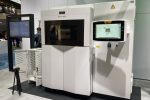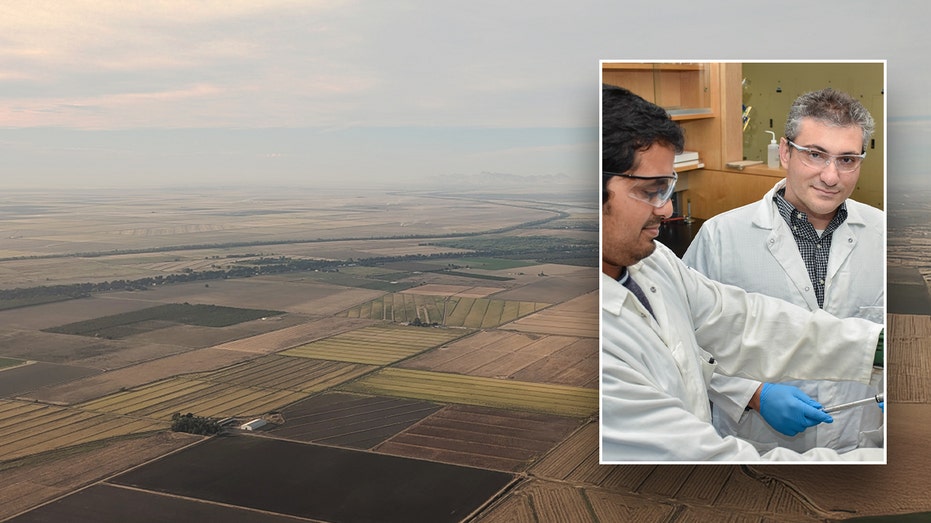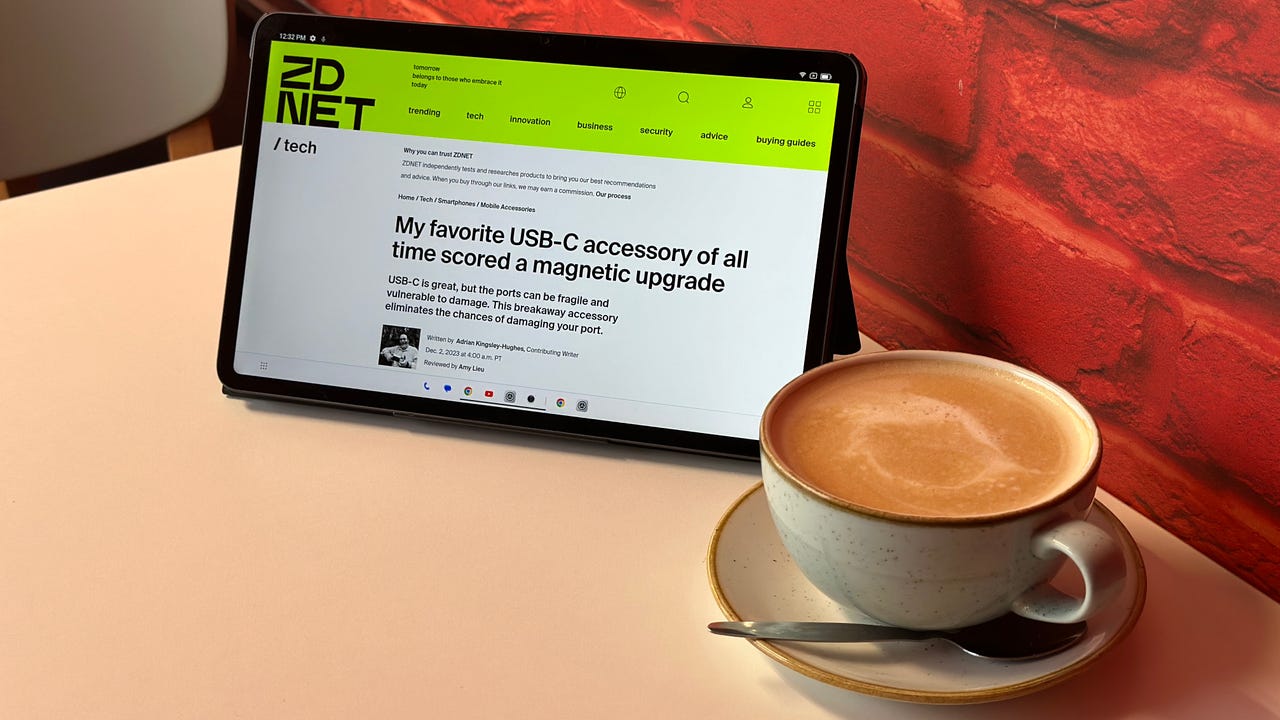
3DPRINTINGINDUSTRY.COM
[INTERVIEW] Fabian Krauss on New EOS P3 NEXT 3D Printer at Formnext 2024
At Formnext 2024, Munich-based 3D printer manufacturer EOS unveiled the P3 NEXT, its new industrial SLS 3D printer.Fitting the same 340 x 340 x 600mm build volume as its predecessor, the EOS P 396, into a smaller footprint, the new 3D printer features updated software, enhanced scanning algorithms, and accelerated recoated speeds. Consequently, the P3 NEXT reportedly offers a 50% productivity increase and over 90% machine availability, reducing manufacturing costs by 30%.During the Frankfurt-based trade show, I spoke with Fabian Krauss, Head of Growth Polymer Solutions at EOS, to learn more about the new system and its value for verticals like medical, aviation, and eyewear.He discussed how the P3 NEXT supports companies scaling to serial production, with some customers reaching hundreds of thousands and even million-part production runs. Its ability to enhance sustainability and slash the total cost of ownership (TCO) was also highlighted.Krauss shared his insights on key additive manufacturing trends and how EOS contends with the growing market share of low-cost, entry-level 3D printers. Additionally, EOS introduced two new SLS powder materials at Formnext, PA 2220 and ALM PA 950, which are both optimized for reusability.The new EOS P3 NEXT 3D printer at Formnext 2024. Photo by 3D Printing Industry.Introducing the P3 NEXT at Formnext 2024 According to Krauss, the P3 NEXT was developed using feedback from existing customers and new companies looking to adopt additive manufacturing. According to Krauss, the company had been balancing high reliability and industry-leading quality with a less favourable TCO.The new system reportedly overcomes this by increasing productivity, increasing material efficiency, and driving down TCO. Krauss pointed to a 50% increase in productivity and an 80% material reuse rate up from 50% for the previous P3 3D printers. This is driven by accelerated heating, faster re-coating, and external cooling of parts, contributing to over 90% machine availability. The result? A 30% reduction in TCO for most applications.Krauss emphasized, We offer an option where users can access new applications, realize new business cases, and fuel growth because this industry has been stagnating a little.How does the P3 NEXT differentiate within the SLS 3D printer market? Krauss argued it is not always about offering the best surface finish, but providing the right quality at the right cost and reliability. He added that EOS products are designed to last for years, with the companys machines and processes able to provide the right quality from the very beginning.With validated 3D print modes for quick deployment and open systems for parameter tuning, users can prioritize either productivity or quality based on application needs. The P3 NEXTs open system is optimized for industrial users wanting to tweak 3D printing parameters to enhance productivity and improve part quality.EOS 3D printed surgical guides at Formnext 2024. Photo by 3D Printing Industry.EOS new sustainable 3D printing materialsKrauss showcased two new materials from the EOS and ALM brands. For the former, PA 2220 HighReuse, part of the PA 12 family, enables a 70:30 reuse ratio of old to new powder without sacrificing quality. According to Krauss, the white-colored material retains the same mechanics as the companys previous PA 12 offering while increasing isotropy and reducing TCO. This has been launched at Technology Readiness Level (TRL) 5 with fully proven parameters.On the ALM side, PA 950 a black PA 12 material offers an 80% reusability rate. Krauss emphasized that the material unlocks zero-waste production for most print jobs. This plays straight into sustainability and lower TCO, offering customers the best cost per part.By launching it under the ALM brand, EOS has been able to introduce PA 950 to the market more quickly at TRL 3, with scope for additional certification to achieve TRL 5 in the future. Krauss also explained that additives can be mixed into this material to improve its mechanical properties. These include glass spheres, glass beads, glass fibers, carbon fibers, and flame retardant fillers.Both materials are fully validated and ready to run on EOS SLS 3D printers from launch. Its going to be interesting to see how the market adopts these materials, particularly the shift between homogeneous black, traditional white, and potential color applications, Krauss added.Eyewear frames 3D printed using EOS new PA 2220 HighReuse material. Photo by 3D Printing Industry.Targeting regulated applicationsKrauss added the importance of being business case driven and application-driven. Specifically, EOS is targeting regulated markets, with aviation and medical customers set to be the biggest adopters of the new 3D printer.Compatibility with certified medical materials, including the companys PA 2201, makes the P3 NEXT especially well-suited to in-mouth applications. Krauss pointed to a customer scaling the production of 3D printed palatal expanders and sleep apnea devices. While the volume of parts can vary depending on the use case, this customer reportedly produces hundreds of thousands of in-mouth applications. Krauss highlighted another producing millions of 3D printed mascara brushes.He acknowledged that while injection molding still dominates the mass production of simple parts, EOS is complementing injection molding where it has difficulties. According to Krauss, the majority of 3D printing applications are in the thousands of parts, while prototyping remains a healthy business.However, EOS does not believe industry growth will come from prototyping, but rather production applications where additive provides value. Previously, 3D printing technology was acquired because companies didnt want to miss out on the hype. Now, Krauss noted that its the ROI and business case driving the growth, with some applications accounting for 5% of the overall business. These high growth production businesses want a system with full access to differentiate, to optimize, to scale, and to achieve maximum uptime.Other key target markets include aviation maintenance, repair and overhaul (MRO) where EOS flame retardant materials offer significant value for aeroplane interiors. Krauss also called drone production a super high growth market, with both commercial and defense drones gaining a lot of traction. On the consumer side, eyewear was identified as a leading market, where EOS meets requirements for surface finish, dimensional accuracy, and sharp contours.Drone components 3D printed using EOS new ALM PA 950 Black material. Photo by 3D Printing Industry.EOS addresses market competition The 3D printing industry has seen the emergence of low-cost, entry-level FDM 3D printers that offer functions and capabilities suitable for certain purposes where advanced materials are not required. Driven by Chinese companies like Bambu Lab and Creality, these systems are cannibalizing the sales of industrial 3D printers, for particular applications. Market intelligence firm CONTEXT reported that entry-level 3D printer sales increased 65% YoY in Q2 2024. Bambu Lab experienced sales growth of 336% during the quarter. Conversely, shipments of industrial shipments fell by 25% YoY in Q2.Despite these figures, Krauss stressed that the growth of entry-level 3D printers is helping to increase the adoption of EOS industrial SLS systems. He explained that the time when we are competing against the likes of Bambu Labs is minimal, as most EOS applications cannot be served on affordable desktop 3D printers.While SLS 3D printers are beyond the reach of the market Bambu Lab has found the most success in, there have been a number of attempts to bring the powder based 3D printing process to a broader group. One notable example is the Formlabs Fuse 1 3D printer.Rather than viewing these systems as competition, EOS sees emergent low-cost 3D printers as critical to fostering innovation. Krauss explained that entry-level machines help companies adopt 3D printing by encouraging experimentation and design for additive manufacturing.We dont equip our sales teams to fight against these lower-entry systems. Instead, we try to build a bridge and reach out a hand, added Krauss. This strategy involves guiding users from hobbyist systems to industrial-grade solutions as their applications scale.When operating in the industrial space, application engineers and access to global experts are invaluable for users. Krauss has also observed a growing trend of companies beginning their additive manufacturing journey with powder bed polymer 3D printers. This facilitates a smoother transition to industrial production on EOS SLS systems. Its fantastic to see academia, labs, and smaller companies starting with powder-based systems, as the transition to scale is far simpler compared to FDM or SLA, Krauss explained.The Bambu Lab booth at Formnext 2024. Photo by 3D Printing Industry.Looking ahead, Krauss believes the 3D printing industry will continue to evolve from prototyping toward scaled manufacturing. While rapid prototyping will remain valuable, its share of the additive manufacturing market is shrinking. Weve gone from 90% prototyping to 3D printing mainly used for production applications. He predicts that in 10 years, prototyping will become a niche market, and scaled, TCO-driven manufacturing will dominate.EOS is positioning itself for this future, aligning its portfolio and organization to meet the demands of high-volume manufacturing. EOS is setting up its portfolio to help scale customers with fleets of factory modules and running tens or hundreds of tons of material, Krauss added. In 10 years, our bet is that this shift will have paid off.All the news from Formnext 2024.Who are the leaders in additive manufacturing? Vote now in the 2024 3D Printing Industry Awards!Want to share insights on key industry trends and the future 3D printing? Register now to be included in the 2025 3D Printing Industry Executive Survey.What does the future of 3D printing hold?What near-term 3D printing trends have been highlighted by industry experts?Subscribe to the 3D Printing Industry newsletter to keep up with the latest 3D printing news.You can also follow us on Twitter, like our Facebook page, and subscribe to the 3D Printing Industry Youtube channel to access more exclusive content.Featured image shows the new EOS P3 NEXT 3D printer at Formnext 2024. Photo by 3D Printing Industry.
0 Comentários
0 Compartilhamentos
9 Visualizações










